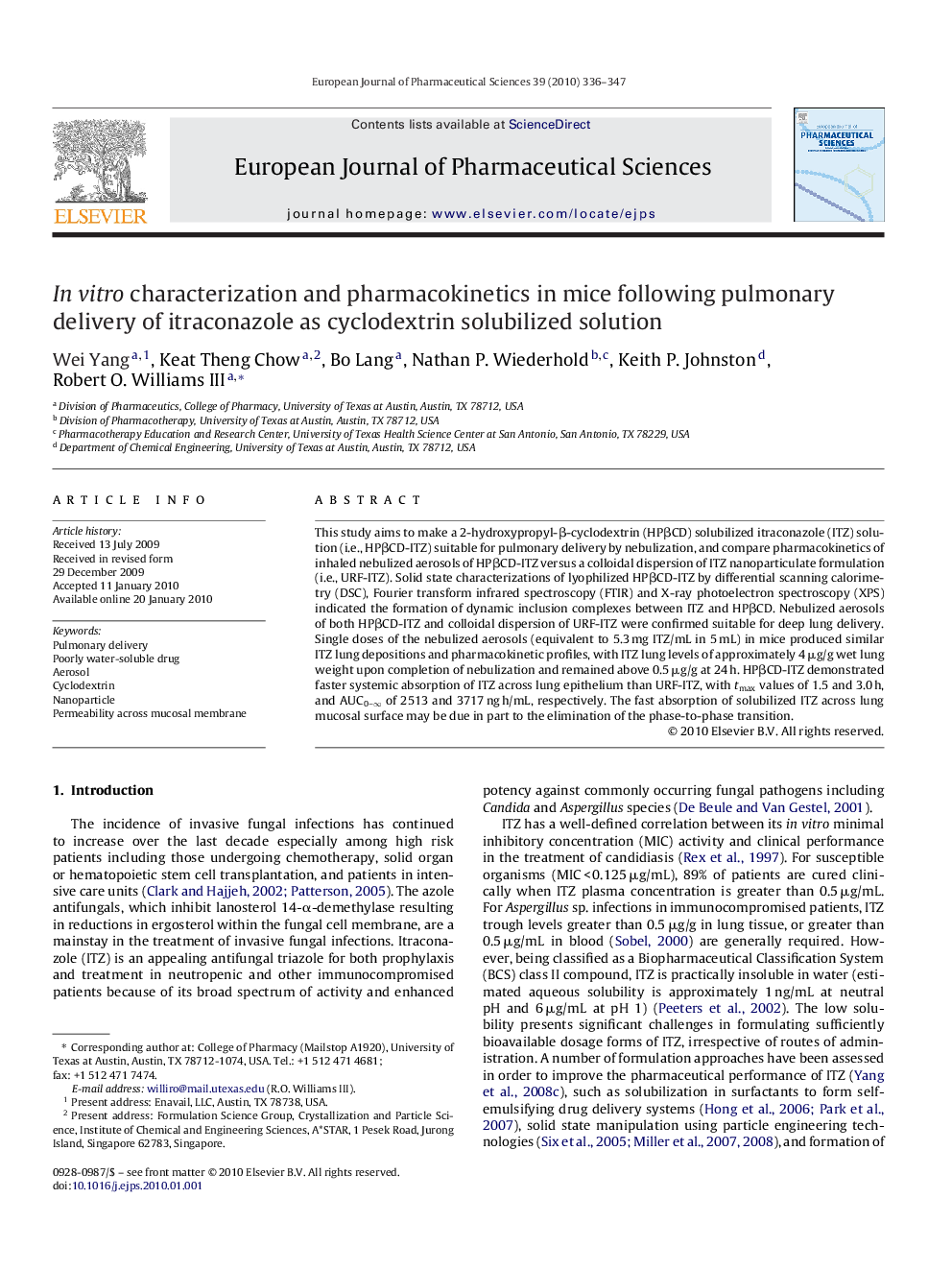| کد مقاله | کد نشریه | سال انتشار | مقاله انگلیسی | نسخه تمام متن |
|---|---|---|---|---|
| 2481835 | 1556248 | 2010 | 12 صفحه PDF | دانلود رایگان |

This study aims to make a 2-hydroxypropyl-β-cyclodextrin (HPβCD) solubilized itraconazole (ITZ) solution (i.e., HPβCD-ITZ) suitable for pulmonary delivery by nebulization, and compare pharmacokinetics of inhaled nebulized aerosols of HPβCD-ITZ versus a colloidal dispersion of ITZ nanoparticulate formulation (i.e., URF-ITZ). Solid state characterizations of lyophilized HPβCD-ITZ by differential scanning calorimetry (DSC), Fourier transform infrared spectroscopy (FTIR) and X-ray photoelectron spectroscopy (XPS) indicated the formation of dynamic inclusion complexes between ITZ and HPβCD. Nebulized aerosols of both HPβCD-ITZ and colloidal dispersion of URF-ITZ were confirmed suitable for deep lung delivery. Single doses of the nebulized aerosols (equivalent to 5.3 mg ITZ/mL in 5 mL) in mice produced similar ITZ lung depositions and pharmacokinetic profiles, with ITZ lung levels of approximately 4 μg/g wet lung weight upon completion of nebulization and remained above 0.5 μg/g at 24 h. HPβCD-ITZ demonstrated faster systemic absorption of ITZ across lung epithelium than URF-ITZ, with tmax values of 1.5 and 3.0 h, and AUC0–∞ of 2513 and 3717 ng h/mL, respectively. The fast absorption of solubilized ITZ across lung mucosal surface may be due in part to the elimination of the phase-to-phase transition.
Journal: European Journal of Pharmaceutical Sciences - Volume 39, Issue 5, 18 March 2010, Pages 336–347